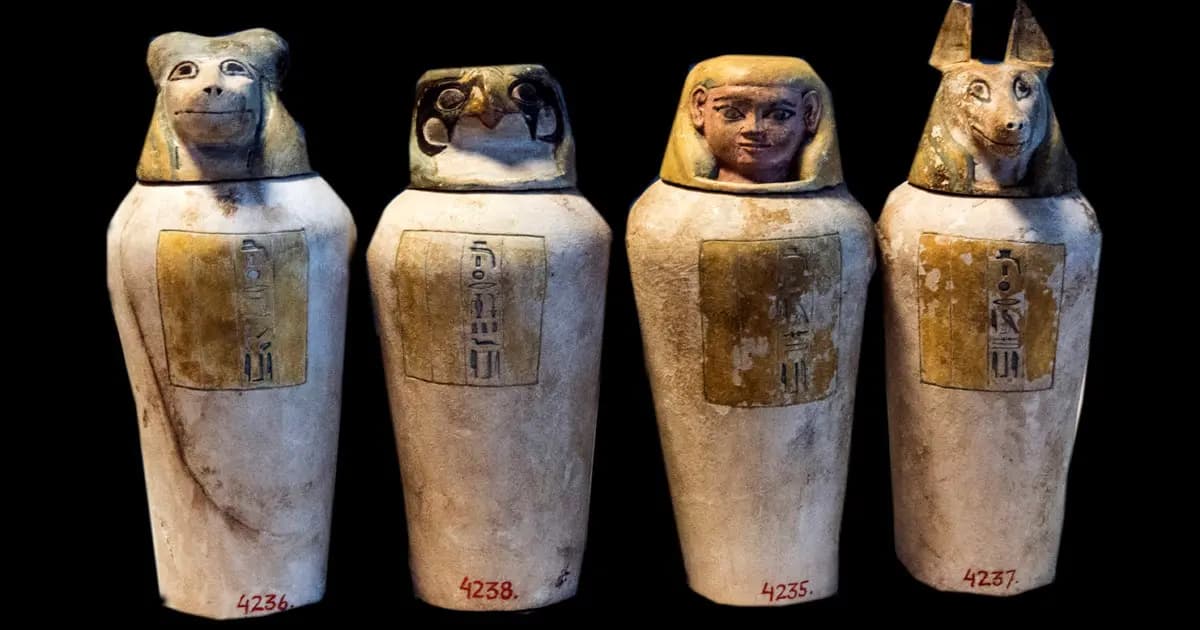Since ancient times, the ancient Egyptians invented a way of handling corpses, called mummification. Previously, the dead were buried in dry sand, but in Egypt there was almost no rain or very little rain. Incidentally, this natural condition has preserved a number of bodies buried in shallow pits.
Around 2600 BC, the Egyptians began purposefully mummifying the dead. They follow a special process to suck all moisture out of the body, leaving only a dry form that does not decompose easily. This technique was developed more than 2000 years later. The best-prepared and preserved mummies belong to the eighteenth to twenty-first dynasties of the New Kingdom (circa 1570-1075 BC), including mummies of famous kings from each dynasty .
The mummification process took place over 70 days, performed by priests. These people must learn some basic knowledge of human anatomy. First, they removed all the rapidly decaying body parts, the brain first. The priest will insert special hook tools through the body’s nostrils to remove pieces of brain tissue. This is a sophisticated technique, said to be quite difficult, requiring skilled technique.
The priests then proceed to remove the perishable organs from the abdomen and chest, through a cut made on the left side of the abdomen. The heart is left intact because they believe it is a person’s soul. The remaining organs such as the stomach, lungs, and intestines were removed and stored separately in boxes or jars, now known as canopic jars. They were buried with the mummies.
After removing all the body parts, the priests began to suck all the moisture out of the body. They used a salt with drying properties to coat and replenish the natron packets inside the body. Natron is a breakdown inhibitor. When it was completely dry, they took out the natron packets and gently washed away any remaining natron inside. The end result is a very dry but still recognizable human form.
To make the mummy more realistic, some of the depressions on the body were filled with linen and other materials, artificial eyes were added.
Next is the stage of wrapping the mummy. Each mummy required hundreds of yards of linen. The monks carefully wrapped long strips of cloth around their bodies, even wrapping each finger and toe separately before wrapping the entire hand and foot. The amulet was placed between the sheaths and the prayer was written on some kind of linen. Usually priests put a mask between the layers of headbands. Finally, they wrapped the shroud in place, and then wrapped the linen around. The mummy is complete. They put it in the coffin and sealed it.
Such elaborate burial customs show that the ancient Egyptians had a great preoccupation with death. Many people plan for an early death. They think that there is no better life than the present and they want it to continue after death. The embalmed body is where their souls are kept. It will stay in the graves, go through hell and into the afterlife.
Kings, nobility and officials were embalmed and buried in large tombs. This is said to be an expensive process, beyond the means of many.
Some animals were also mummified. Sacred cows from the early dynasties had their own cemetery at Sakkara. Baboons, cats, birds and crocodiles, also of great religious significance, were sometimes mummified, especially during later dynasties.
Today, archaeologists and experts use X-rays to study ancient mummies. New techniques reveal nerves, blood vessels in the nail bed, different layers of skin, and even fat cells (stored fat). Scientists were surprised that thousands of years old Egyptian mummies were still intact.

